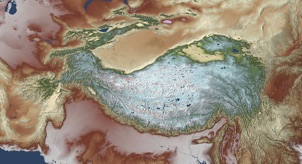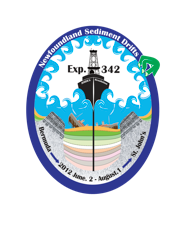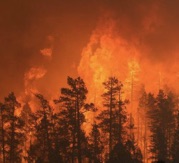NEWS
-
•September 2018 - PhD researcher Courtney Wager attends the International Conference on Magnetotactic Bacteria in Kanazawa, Japan.
-
•August 2018 - Josh Marquardt (BSci, UW Milwaukee) joins the research group as a MSci graduate researcher. Josh will be studying how fluid-microbe-rock interactions modify the magnetization of young oceanic crust.
-
•June 2018 - Bob Violano, a Masters of Science for Secondary School Teachers (MSSST) of Midvale Middle School joins begins his summer research project on Lower Eocene chronostratigraphy of a continental interior basin.
-
•May 2018 - Volcanism at 1.45 Ma within the Yellowstone Volcanic Field, United States is published in the Journal of Volcanology & Geothermal Research.
-
•April 2018 - The update to our 2012 Greater India Basin hypothesis is published in Tectonophysics: Reconstructing Greater India: Paleogeographic, kinematic, and geodynamic perspectives.
-
•March 2018 - Uni. Heidelberg PhD student Lisa Egger publishes another chapter of her thesis: Sea-level and surface-water change in the western North Atlantic across the Oligocene-Miocene Transition: A palynological perspective from IODP Site U1406 (Newfoundland margin).
-
•February 2018 - A collaboration several years in the making with climate modelers to explore the influence of paleolatitude of the Himalaya and Tibetan Plateau on the Cenozoic climate of East Asia is published in EPSL: Changes in Tibetan Plateau latitude as an important factor for understanding East Asian climate since the Eocene: A modeling study.
Lab Contact Information:
Peter C. Lippert
Department of Geology & Geophysics
Frederick Albert Sutton Building
The University of Utah
115 S 1460 E, Room 383
Salt Lake City, UT 84112-0102
pete (dot) lippert (at) utah (dot) edu
August 15, 2018



Welcome to the Utah Paleomagnetic Center (UPC) website.
Our research group uses the unique information encoded in magnetic materials to explore a variety of processes and phenomena in Earth System Science. We value an inclusive and interdisciplinary approach to research, both in terms of the science we do and the scientists doing the research. Check out the links above for more information about who we are and how we do what we do, the research that keeps us busy, and how and where we’ve shared our ideas with the larger community.




